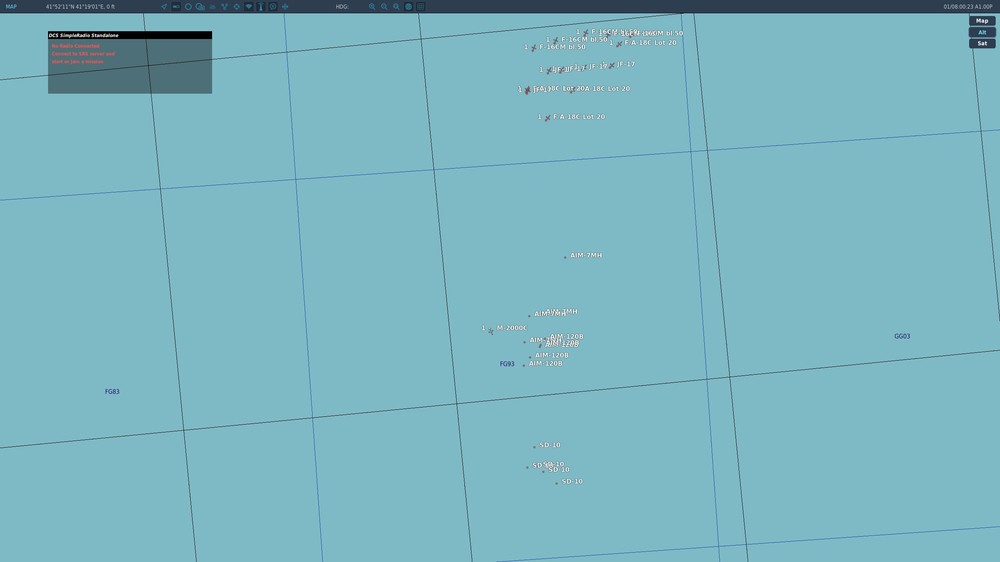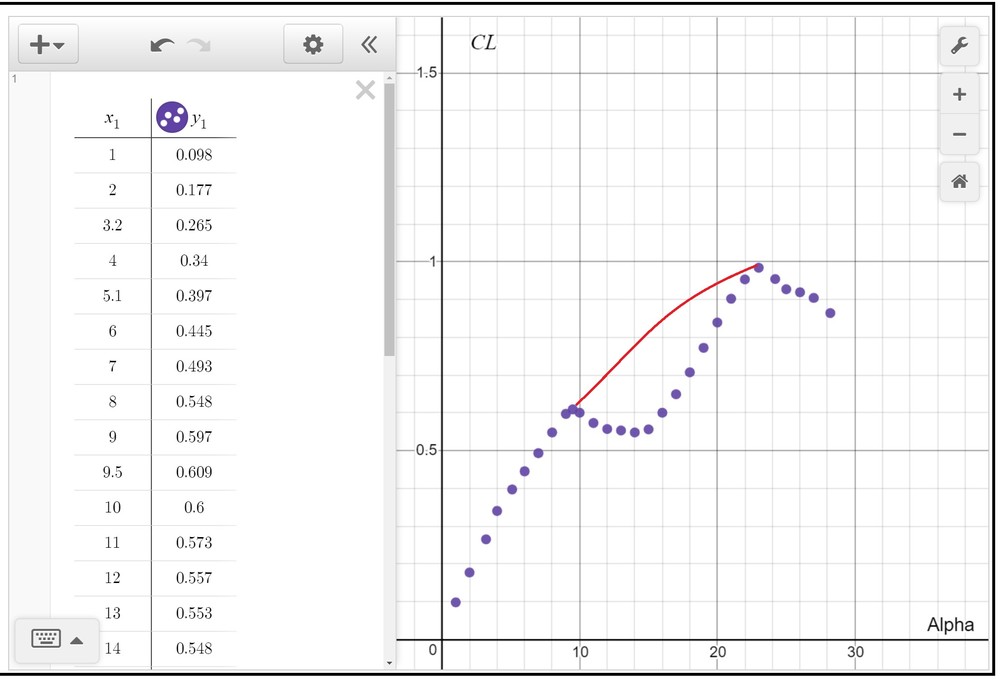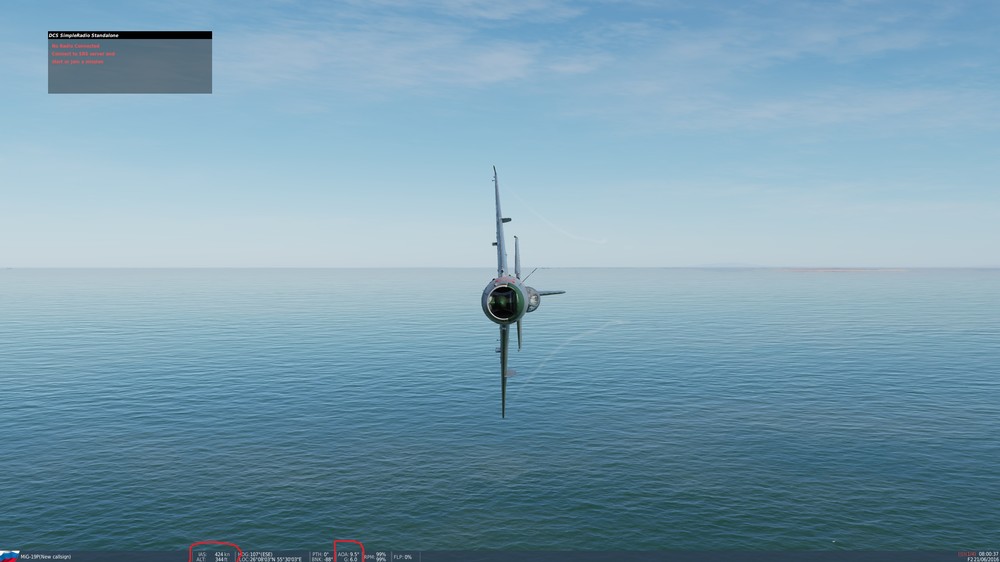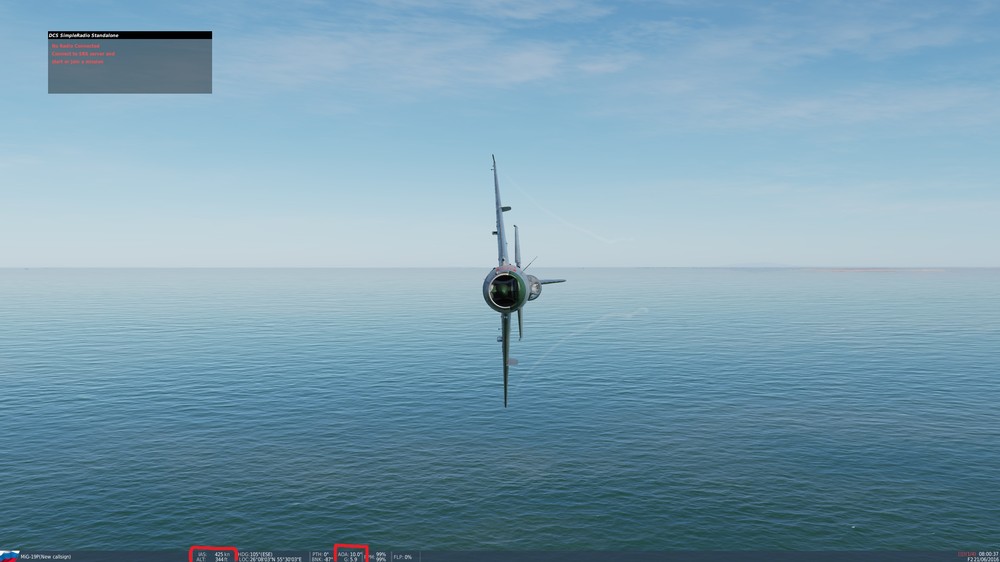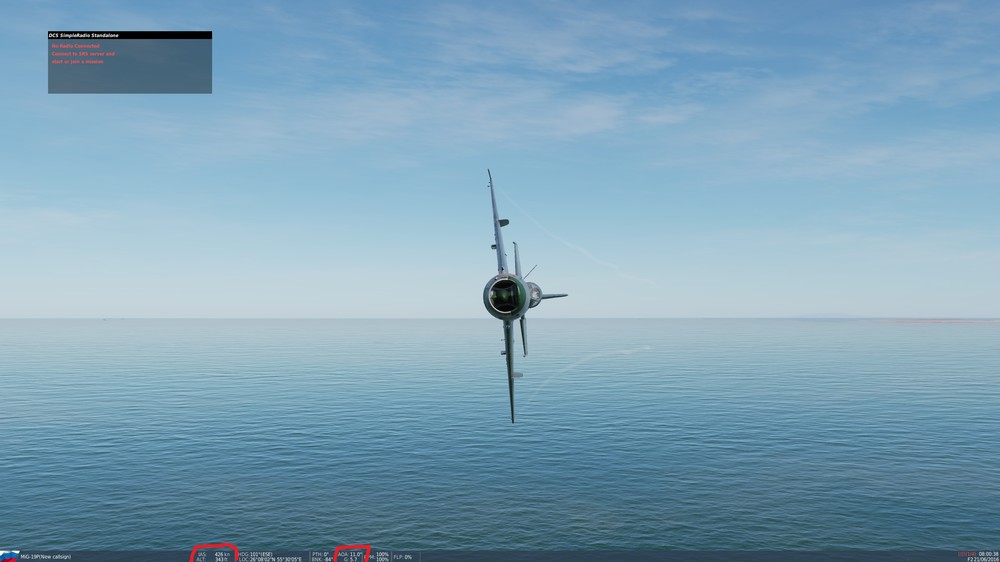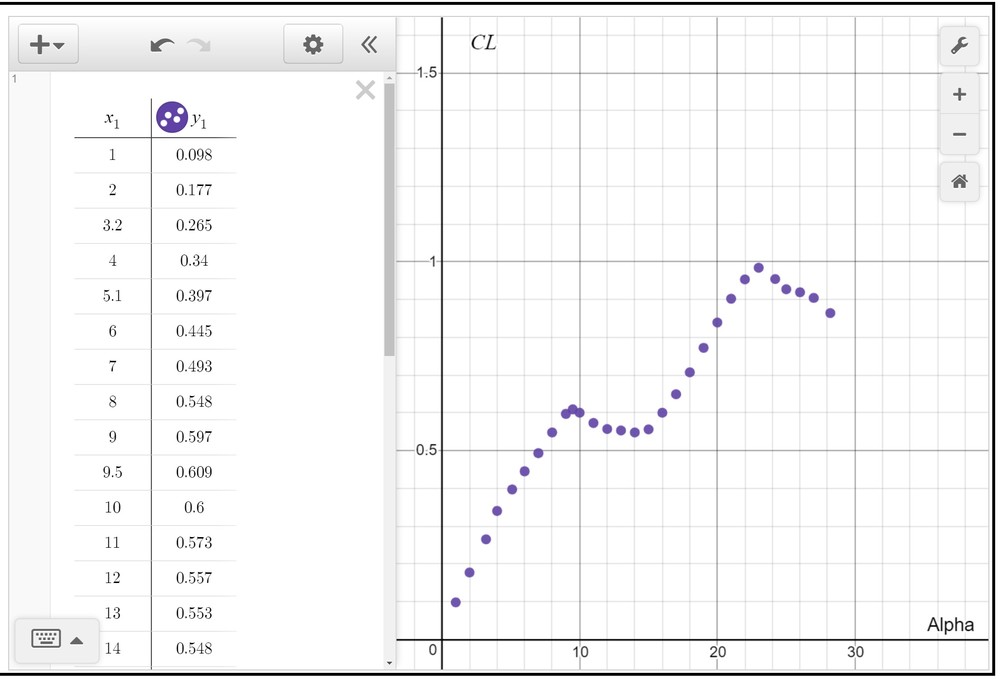

HWasp
Members-
Posts
645 -
Joined
-
Last visited
Content Type
Profiles
Forums
Events
Everything posted by HWasp
-

Workload using jester AI to control radar elevation
HWasp replied to HWasp's topic in DCS: F-14A & B
Ok, I see the confused emoji, maybe I wan't clear enough Here it is simplified: - Need a quicker way to command Jester to adjust radar up/down/left/right a bit. Without diving into the jester menu. In addition to the current commands (which are fine.) -
Open jester menu, press scan elevation, scan alt/dist, select option. These are 4 separate actions just to do an absolutely basic thing! Jester is not scanning on his own, he won't even point the radar at hostile DL contacts. (Not sure if it is even possible, or planned to have him scan for targets on his own...) This means that in any coplex scenario with multiple targets, I have to spend an awful lot of time in the jester menu. The closer the fight it is the worse it gets. I understand that HB tries to avoid adding direct controls to the front seat because of immersion and realism, but the unfortunate reality is that jester in his present state is not able to give you the most basic SA without constant micro- management, and it is neither fun nor realistic... Please add bindable jester commands for the most basic radar controls! Here is an option how it could work: - add commands to step radar elevation +/- 5000 feet at the current selected TID range - add command to set azimuth left/right - add command for TWS auto I stopped flying the 14 for a very long time because of this, but yesterday I've lost my patience and copied radar control axis from the RIO pit lua to the front seat. Must say finally being able to point the radar where I want it within reasonable time is a relief. Please do something about this!
-
Thanks! The 29 needs some patience and practice, then it is a joy to fly. Gunnery is really difficult though, I agree, can't just do those high AoA snapshots easily like the F-15/F-18/M2000. What really is important imo. is the correct trim position. Very subjective opinion on my part, but since it was brought up, I think that the F-15 FM is completely sterile compared to the other planes, even the full fbw ones. I don't doubt the performance, but having a flight control system that perfect.... Nothing bad can ever happen to me in the F-15 regardless how hamfisted I throw the stick around. Maybe that is the less realistic behaviour?
-
MiG_29Mozd.trk
-
Tried to make an in-flight test at 2000 m same conditions around M 0,5 This is much less accurate because I did not turn the engines off when trying to measure deceleration in level flight. Anyway I got around 92 kN / engine, while the chart shows around 102 kN, so closer. This difference could be there because I did not calculate with the idle thrust.
-
Did another test with a low mass of 18206kg (10% fuel) That acceleration showed 85,6 kN per engine, so changing the weight does not produce anything funny, it is just the thrust is less than expected. Does that chart account for the intake fence in take off config? That could reduce thrust quite a bit by blocking some of the air.
-
I've done a low speed ground acceleration test at close to sea level airfield (Sochi), temperature = 15 C During the test I measured low speed acceleration (flaps up), watching the track at time slowed to 1/8 m = 26821 kg (full fuel no load) max AB acceleration was 5,8 m/s2 after that I measured deceleration at low speed, engines off deceleration engine off (59-45 kts range) average 0,7 m/s2 Using these 2 values: Drag : 18 775N Thrust: 174 337N (174,3 kN) Thrust per engine : 87,15 kN <-------> according to the chart it should be more than 110 kN
-
Tried to roughly calculate average drag values in DCS measuring average deceleration of the missile at sea level, and the drag values don't seem to be vastly different from ones in the table: Between 2800 and 2600 km/h your table suggests around 11000N drag, in DCS it seems to have around 13000N, so more but nothing extremely crazy. What seems really strange in the sim, is that at low altitude the missile hits a fixed speed, and refuses to accelerate any further (around 1700 kts). It reaches that speed very quickly and then it just keeps that. What is the thrust of the ER's motor? Is it in the 80kN range?
-
I can't think of any aerodynamic explanation, why the MiG-19 would have such a loss of lift at such a low AoA, also this issue decreases the planes turn performance and handling in a fight seriously. Again, please investigate this!
-
So, just for clarification: the problem I see is the dip in the CL-Alpha curve at 9.5 AoA. These graphs are usually quite straight up to stall AoA, and 9.5 degrees is pretty far from stall AoA on the MiG-19 (As you can see on the graph, and in the sim as well, it starts around 23 degrees) So this is what a text book example of the graph looks like: Also here is what I would expect it to look like in case of our MiG-19 (the red line instead of the actual measurement)
-
Hi! I have found the following while testing the MiG-19P turn performance: AoA 9 = 5,8G at 424 kts AoA 9,5 = 6,0G at 424 kts AoA 10 = 5,9G at 425 kts AoA 11 = 5,7G at 426 kts As you can see, G value is at the maximum at 9.5 degrees AoA, after that it decreases at constant speed. See attached screenshots. After this I calculated CL (coefficient of lift) roughly and plotted a graph, which has a strange dip starting at 9.5 degrees AoA. See graph attached. Please investigate!
-
RWRs do not have complete 360 degrees coverage over your aircraft and you were not flying straight and level. Also the missile will not approach you from straight head-on, it is diving on you from high altitude. And what if your rwr was bugged? (Sry I know, there are no bugs in DCS... :) ) You see? It is not that simple. Go to ME, have an AI fire at you, record the track, watch it from the missile's perspective.
-
The best you can do is to get Tacview to see what actually happened, and\or make an AI F-14 fire at you in ME and watch the track. Even if you happened to find an actual problem with the missile, you'd still need to present it clearly with a track. AIM-54 has been a mess since release, but those issues are related to guidance mainly, and if they manage to fix them with the new API finally, the missile will still kill you in a situation like that.
-
Instead of posting here, you could use the Mission Editor of DCS to set up an AI F-14 to fire Aim-54s at you from different ranges to test how it actually works in game, and practice defending it to avoid surprises. Sorry, but based on your video, you don't know what you are doing at all. You keep flying almost straight at an enemy with active missiles and wait for your rwr to go off? You won't have much success flying like that even against 120s...
-
Is there a new ARU behaviour with this patch? With the new patch full stick deflection with ARU in auto produces only 5,5Gs over 850 km/h IAS for me. Is that intentional? As speed drops and ARU starts to increase elevator deflection, higher Gs and AoA are available at lower speeds.
-
Rants like that will get you nowhere...
-
In my opinion it does not make any sense to have this heated discussion for 20 pages, when the most basic issues are not yet fixed with the R-27 family. https://forums.eagle.ru/showpost.php?p=3887106&postcount=263 That post by FoxAlfa clearly shows the main issue: R-27 has 4 times more speed loss compared to an Aim-7 in a turn while pulling less AoA ang G. 4 times difference!!! Also: Could an ET do that in DCS? I doubt it... And the flight path of the real missile is far from perfect. So I'd suggest that we concentrate on the following instead of guidance details and unknown upgrades: Aerodynamic properties and chaff/flare resistance should be in the same ballpark with the already upgraded western missiles. Until the missiles are modeled to completely different standard, there really is nothing to talk about.... Looking forward to the next patch.
-
MiG-29 touch down at 220 kts. Is that fast enough? No excessive bouncing, watch the track. There are 2 reasons for the 29 to be jumpy: 1. The nose high arrangement of the landing gear---> you strike the nose gear easier. 2. The elevators loose some of their effectiveness raising the nose entering the ground effect---> if you don't counter that, nose drops. That being said, yes the spring force might be a bit too much, but look at the bright side: the MiG-29 module can teach people to get rid of their bad landing habits. mig29220.trk
-
The F-16 and F-18 tracks I posted previously play differently with the new patch, but still they show that you can abuse those planes to the extreme and survive with no bounce at all, minor damage or none even... Do you think that is realistic? Look at that vid: plane is dropped from 20ft or 6 meters, meaning an impact at 11 m/s or 2160 feet per minute In my track I impacted over 2500 feet per minute (and nose gear first!!!) and really nothing happens to the F-18 in DCS The F-16 track is even worse, that is not even a carrier aircraft. After abusing the F16 and F18 like that I'm starting to think that they are the ones with unrealistic forgiveness for bad landings....
-
Well didn't test them all, but I've checked what the F-16 does for example, if you fly it into the runway at 2000 feet per minute around 170 kts... and nothing happens, which I find rather difficult to believe. https://forums.eagle.ru/showpost.php?p=4412626&postcount=121 MiG-21 can bounce if it is really pushed So overall my impression is that while the 29s nose gear does need to be looked at, other modules might let people get away too easy with extreme hard landings. Here are 2 tracks where I go full retard with the F-18 and F-16. Did manage to bounce the F-16 by flying it into the runway at 200kts with nose gear first. I doubt the plane would survive that IRL though... Maybe some other modules are too forgiving and durable? f18ret.trk f16ret.trk



